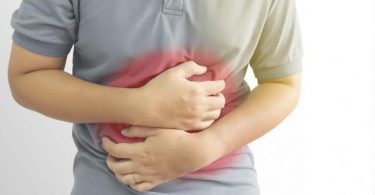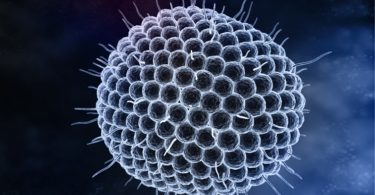URTICARIA AND ITS HOMEOPATHIC MANAGEMENT
Dr. Payal Gupta
B.H.M.S (DLI) MA Psychology
M.D. Scholar, Department of Organon of Medicine, Bakson Homoeopathic Medical College and Hospital, Greater Noida, U.P
Abstract: Urticaria is an allergic reaction marked by multiple discrete swellings on the skin (wheals) that are intensely itchy and last up to 24 hr. The wheals appear primarily on the chest, back, extremities, face, or scalp. Urticaria is a primary sign of local and systemic anaphylactic reactions. It affects people of all ages but is most common between the ages of 20 and 40. Angioedema is frequently associated with urticaria.
Keywords- Urticaria, Type I hypersensitivity, Homeopathy, Antim crud, Natrum mur
INTRODUCTION
Urticaria is also known as hives or nettle-rash. Urticaria is a common reaction pattern in which pink, itchy or ‘burning’ swellings (wheals) can occur anywhere on the body. Individual wheals do not last longer than 24 h, but new ones may continue to appear for days, months or even years. Traditionally, urticaria is divided into acute and chronic forms, based on the duration of the disease rather than of individual wheals. Urticaria that persists for more than 6 weeks is classified as chronic. Most patients with chronic urticaria, other than those with an obvious physical cause, have what is often known as ‘ordinary urticaria’.
Causes of Urticaria
Urticaria is a type I hypersensitivity reaction occurs in response to histamine. Histamine is a chemical released from specialized cells along the skin’s blood vessels2. One person in five will suffer from it during the course of their life (at differing times). Sometimes, it represents a true allergic reaction caused by a food, an animal, a medication, an insect sting, a chemical product or other sensitizing agent such as latex. However, most often, urticaria is not allergic in nature.
Classification of Urticaria
- Cold urticaria
Patients develop wheals in areas exposed to cold, e.g. on the face when cycling or freezing in a cold wind. A useful test in the clinic is to reproduce the reaction by holding an ice cube, in a thin plastic bag to avoid wetting, against forearm skin. A few cases are associated with the presence of cryoglobulins, cold agglutinins or cryofibrinogens.
- Solar Urticaria
Wheals occur within minutes of sun exposure. Some patients with solar urticaria have erythropoietic protoporphyria; most have an IgE-mediated urticarial reaction to sunlight.
- Heat urticaria
In this condition wheals arise in areas after contact with hot objects or solutions.
- Cholinergic urticaria
Anxiety, heat, sexual excitement or strenuous exercise elicits this characteristic response. The vessels overreact to acetylcholine liberated from sympathetic nerves in the skin. Transient 2–5 mm follicular macules or papules resemble a blush or viral exanthem. Some patients get blotchy patches on their necks.
- Dermographism
This is the most common type of physical urticaria, the skin mast cells releasing extra histamine after rubbing or scratching. The linear wheals are therefore an exaggerated triple response of Lewis. They can readily be reproduced by rubbing the skin of the back lightly at different pressures, or by scratching the back with a fingernail or blunt object.
- Contact urticaria
This may be IgE-mediated or caused by a pharmacological effect. Wheals occur most often around the mouth. Foods and food additives are the most common culprits but drugs, animal saliva, caterpillars and plants may cause the reaction. Recently, latex allergy has become a significant public health concern.
COMPLICATIONS OF URTICARIA
Urticaria is normally uncomplicated, although its itch may be enough to interfere with sleep or daily activities and to lead to depression. In acute anaphylactic reactions, oedema of the larynx may lead to asphyxiation, and oedema of the tracheo-bronchial tree may lead to asthma.
MANAGEMENT OF URTICARIA
1) Eliminate the allergic cause (food, medication, contact allergen, etc.). In the same way for “pseudo-allergic” urticaria, eliminate the provoking agent.
2) Avoid factors that evoke the physical urticarias, such as excessive heat, the sun, tight clothing or irritants etc. Also avoid vasodilatory factors which may potentialise urticaria, such as alcohol, nicotinic acid, anti-inflammatories, several anti-hypertensive medications and diverse food “irritants” (acidic foods, spices, fermented foods, charcuterie, and many exotic dishes).
3) Treat, if possible, any disease which may be the cause of the urticaria (secondary urticaria or angioedema).
HOMEOPATHIC THERAPEUTICS
Apis mellifica, Arsenic album, Natrum muriaticum, Rhus Toxicodendron and Urtica urens are some of the common homeopathic remedies for urticaria.
- Apis mellifica
Acts on cellular tissues causing odema of skin and mucous membranes. The very characteristic effects of the sting of the bee furnish unerring indications for its employment in disease. Swelling or puffing up of various parts, oedema, red rosy hue, stinging pains, soreness, intolerance of heat, and slightest touch, and afternoon aggravation are some of the general guiding symptoms. Erysipelatous inflammations, dropsical effusions and anasarca, acute, inflammation of kidneys, and other parenchymatous tissues are characteristic pathological states corresponding to Apis.
- Bovista
Urticaria on excitement, with rheumatic lameness, palpitation and diarrhoea. Itching on getting warm. Urticaria on waking in the morning, worse from bathing.
- Arsenic album
The Urticaria caused by eating shellfish which causes burning and itching with restlessness. Eruptions are worse at night5. Burning pains; the affected parts burn like fire, as if hot coals were applied to parts > by heat, hot drinks, hot applications. attacks like croup instead of the usual urticaria.
- Natrum muriaticum
Urticaria, acute or chronic; over whole body; especially after violent exercise6. Urticaria; itch and burn. Hives, itching after exertion. Greasy skin.
- Rhus toxicodendron
Bad effects of getting wet, especially after being overheated. Ailments: from spraining or straining a single part, muscle or tendon; overlifting, particularly from stretching high up to reach things; lying on damp ground; too much summer bathing in lake or river6. Red, swollen; itching intense. Vesicles, herpes; urticaria; pemphigus; erysipelas; vesicular suppurative forms. Glands swollen. Cellulitis.
- Urtica Urens
Urticaria caused by eating shellfish. Symptoms return at the same time every year. Itching blotches. Urticaria, burning heat, with formication; violent itching. Consequences of suppressed nettlerash. Rheumatism alternates with nettle-rash. Burn confined to skin. Urticaria nodosa. Angioneurotic oedema.
REFERENCES
- Hunter J., Savin J., Dahl M., textbook of clinical dermatology, Third Edition, Pg 94-96.
2.Hives and your skin, Available from https://www.webmd.com/skin-problems-and-treatments/guide/hives-urticaria-angioedema#1. Accessed on 26.10.2020. - The Association of Allergists and Immunologists of Québec, Available from https://allerg.qc.ca/Information_allergique/4_3_urticaire_en.html. Accessed on 26.10.2020.
- Boericke W. Boericke’s New Manual of Homoeopathic Materia Medica with Repertory, New Delhi- B. Jain Publishers, Reprint edition 2007, 2008.
5.Homeopathic remedies for hives (Urticaria), Available from https://hompath.com/blog/homeopathic-remedies-hives-urticaria/. Accessed on 26.10.2020. - Allen. H.C. ‘Keynotes and Characteristics with Comparisons with Bowel Nosodes’.





